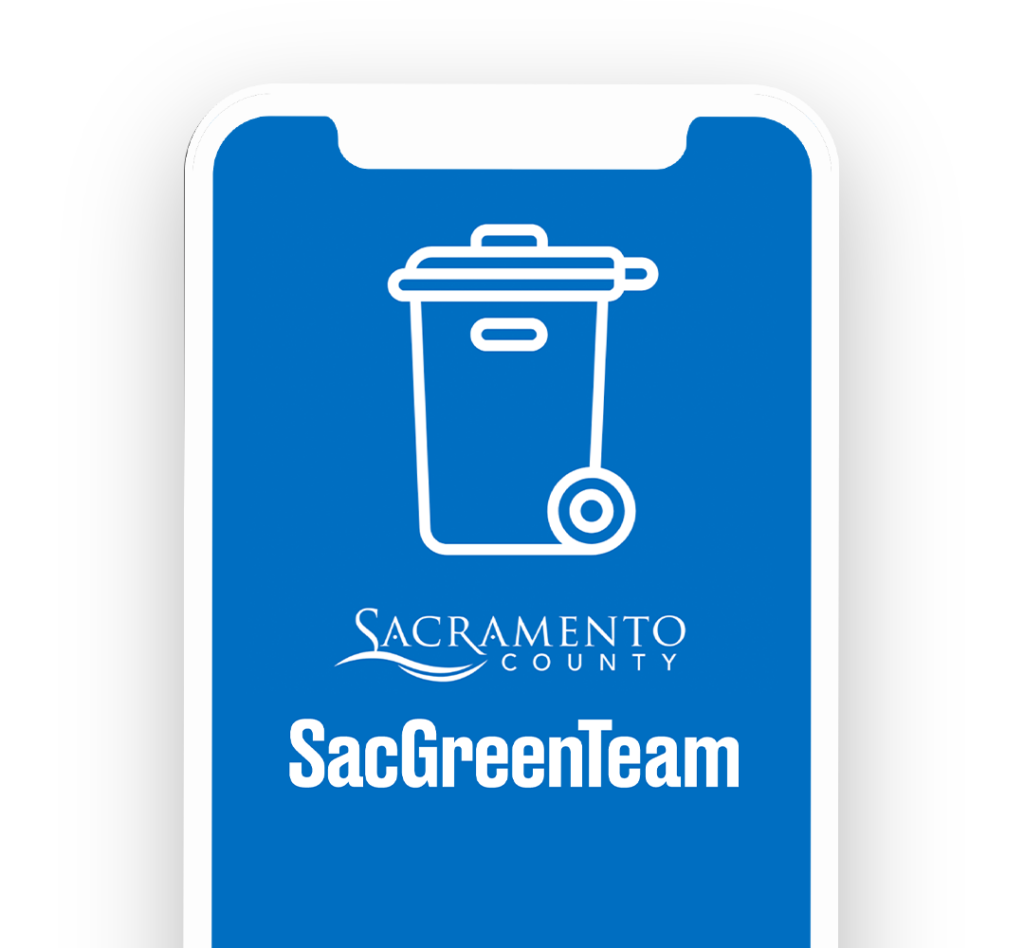MEET
 OLIVIA
OLIVIA
ORGANICS
Check out our curbside customer videos!
Tag your own video: #OrganicsCollectionMyWay
What’s the problem?
Organics in the Landfill
(food scraps, food -soiled paper, and yard trimmings)
Organics food scraps, food-soiled paper, leaves, grass, branches and other yard trimmings makes up over half of what we throw away (source: CalRecycle.ca.gov). Methane, a greenhouse gas, is produced when organic material decays/rots in a landfill.
Olivia helps reduce greenhouse gas emissions and save valuable landfill space by collecting these and putting them in the Organics cart (previously Green Waste cart) so they can be made into nutrient rich compost.
What can I do?
Collect and place organic material (food scraps, food-soiled paper and yard trimmings) in the Organics cart (previously Green Waste cart) starting the week of July 4, 2022.
Step 1

Keep food scraps clean by removing stickers, twist ties, plastic wrap and rubber bands. Plastic, glass, coated paper and metal should never go in the Organics cart.
Step 2
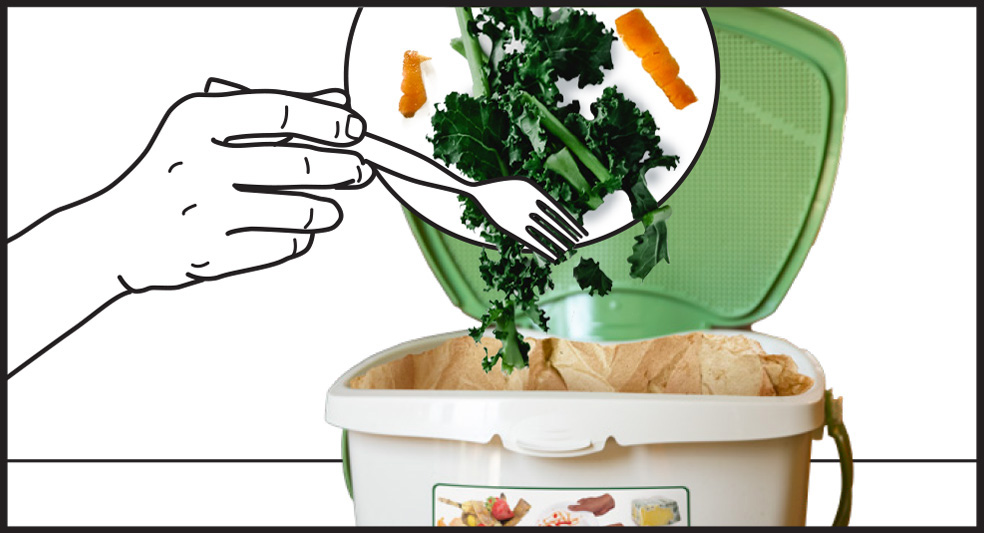
Collect food scraps and food-soiled paper in a bowl, recycled container or kitchen pail.
Step 3
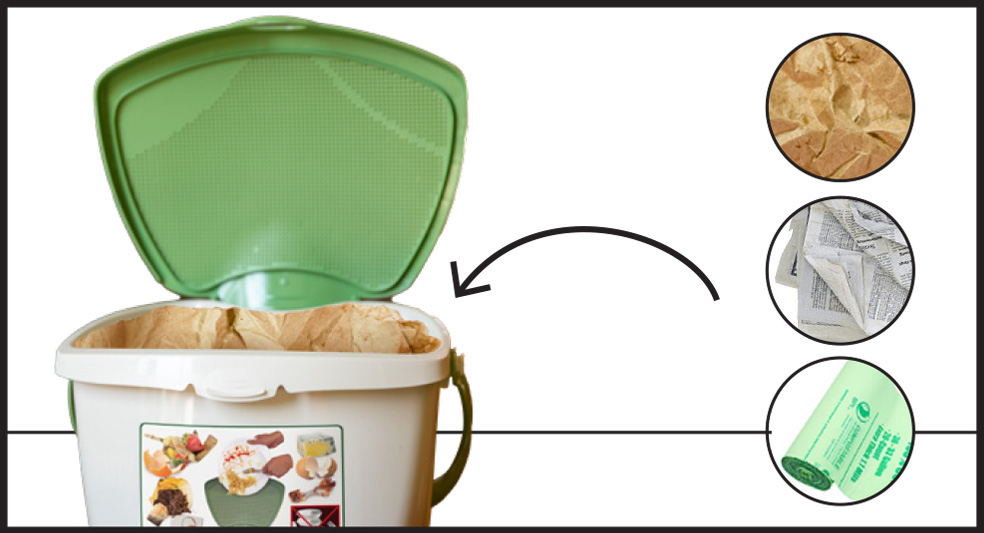
Line with a paper bag or towel, newspaper, or approved compostable bag (BPI Certified or labeled with ASTM D6400).
Step 4
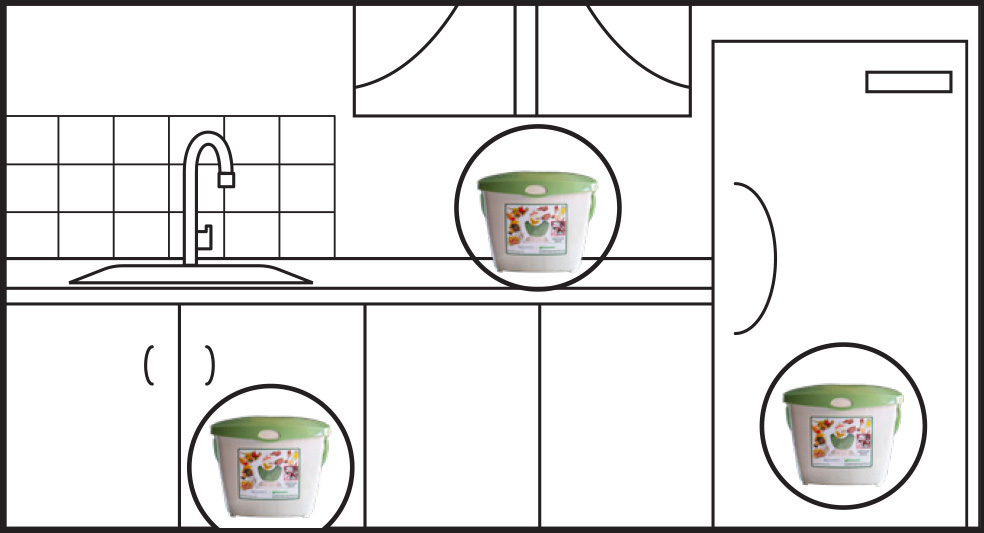
Store in a convenient location (under sink, on the countertop, or in the refrigerator or freezer) for food prep trimmings and scraping your plate.
Step 5
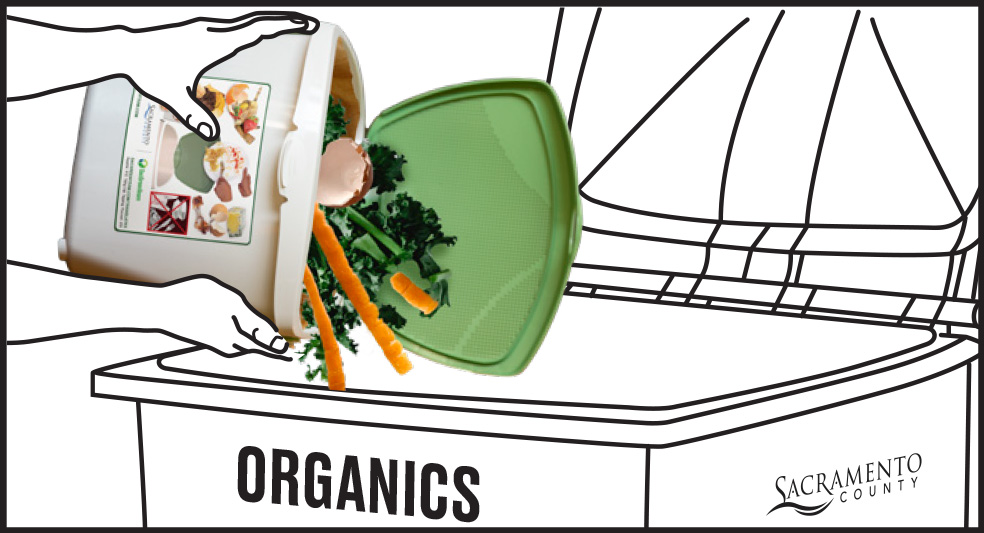
To minimize odors and pests, empty food scraps and food-soiled paper daily into your Organics cart for weekly curbside collection. Rinse or wipe with paper towel after each use.
Organics Cart Items
Items to leave out
the benefits
Separate Organics for Compost versus burying it in the landfill
California’s Senate Bill 1383 (SB 1383) calls on residents and businesses statewide to divert organics from the landfill to make and utilize beneficial compost/mulch and biogas; and extend the life of landfills. Keeping organics out of landfills greatly reduces the greenhouse gas byproduct, methane, which contributes to climate change, and per health and climate experts makes health issues like asthma, and other lung and heart diseases worse. Learn more about the County’s efforts to comply with other aspects of SB 1383.
*Source Compostingcouncil.org
0rganics Collection Tips
Easy tips for reducing odors and pests at the Organics cart:
- Drain excess liquid from food scraps
- Freeze/refrigerate scraps before adding to the Organics cart
- Add food scraps and food-soiled paper to a paper bag before you put it in the Organics cart
- Sprinkle the inside of the Organics cart with baking soda
- Layer yard trimmings, then food scraps and food-soiled paper in your Organics cart
- If needed, rinse Organics cart in landscaped areas only and avoid releasing gray water in the storm drain systems and neighboring properties.
NOTE: Using your garbage disposal more will affect wastewater treatment plants, can clog sewer lines and increase water usage. Remember, do not put fats, oils and grease (FOG) down the drain, instead: can it, scrape it: https://www.sacsewer.com/stop-clog
faq
Wonder what goes in the Organics cart? We can help!
If you still have questions, please contact us.
resources
Explore the resources in this section to learn what goes in the Organics cart and you can become an Organics Binfluencer, just like Olivia!
Adults
Kids
Educators
resources
Explore the resources in this section to learn what goes in the Organics cart and you can become an Organics Binfluencer, just like Olivia!
Adults
Kids
Educators
Contact us!
Have a question about recycling? We’ve got answers! Email us at sacgreenteam@saccounty.gov and we’ll get back to you within three business days.


